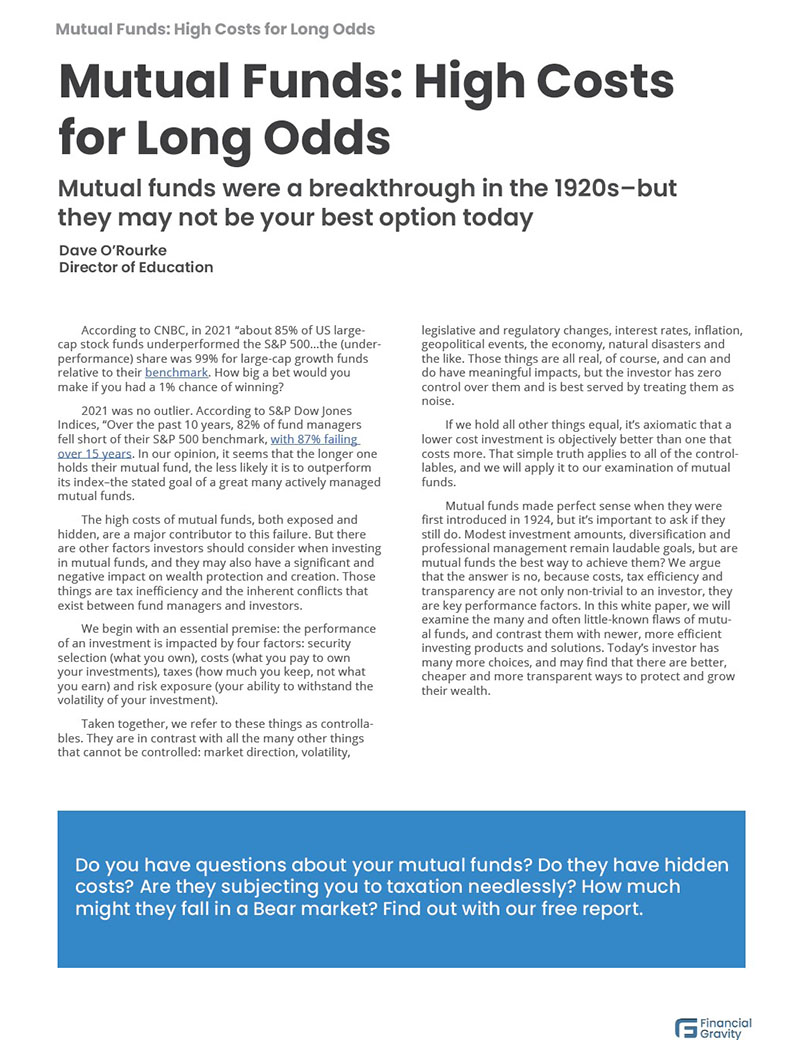Jack Bogle Had A Vision
In 1975, John C. (Jack) Bogle (1929 – 2019) founded The Vanguard Group after being ousted as CEO of Wellington Fund. As a brilliant young student at Princeton, Bogle had studied mutual funds and found that picking stock winners on a consistent basis was virtually impossible, and he set his mind to creating investment options that would optimize investor returns.
The 1950s and 1960s were a period of great discovery in the field of economics, particularly in asset pricing and portfolio theory. Bogle was especially interested in work being done at the University of Chicago, which showed that “passive,” broadly diversified portfolios that closely tracked market indexes tended to outperform “active” mutual funds.
Over the decades, the University of Chicago has produced 14 Nobel laureates in Economic Sciences, while Bogle became one of the giants in global finance. It’s hard not to appreciate Vanguard’s mission: “To take a stand for all investors, to treat them fairly, and to give them the best chance for investment success.”
Bogle’s vision for Vanguard included a unique, client-centric ownership structure. On its website, Vanguard states it is “owned by its member funds, which in turn are owned by fund shareholders. With no outside owners to satisfy, we focus squarely on meeting the investment needs of our clients.” We applaud Vanguard’s customer-first commitments.
Established to focus on index-style investing, Vanguard launched the First Index Investment Trust fund in May of 1976. Later known as the Vanguard 500 Fund, it and its sister index funds have grown to an empire with over $8 trillion in assets under management. Chicago alumnus and professor Paul Samuelson, who has been called “the father of modern economics,” ranked Bogle’s invention as among the greatest inventions in history “…along with the invention of the wheel, the alphabet, Gutenberg printing.”
Experienced investors have likely noticed that Wall Street does not give up its commissions lightly and has fought to keep the actively managed mutual fund alive despite the fact that active funds are virtually synonymous with failure. A 2022 study by S&P Dow Jones found that “Over the past 10 years, 82% of fund managers fell short of their S&P 500 benchmark, with 87% failing over 15 years.”
A Hard To Find But Hugely Consequential Headline
So, now for the big news: last month, after nearly 50 years since their inception, passively managed funds surpassed actively managed funds in total assets under management. On February 13th 2024, Morningstar published an article titled “Index Funds Have Officially Won,” announcing that indexed funds have finally captured more than 50% of the fund universe’s assets. Given all the other news out there, you may not have seen it.
This is no minor story in the investments industry and no freak trend. According to the article, 10 years ago, index funds reached the 30% level, and “almost certainly, they will crack the 70% mark during the next decade.” This is a massive threat to the mutual fund industry, which appears to be going the way of the dinosaur.
Why did it take two generations of investors for the passive style to take leadership? A combination of incentives for the mutual fund industry, which captures hundreds of billions of commission dollars per year, and investor bias.
The incentives of mutual fund wholesalers and salespeople are easy to understand: They seek to maximize their income. Investor bias is trickier; it falls into the broader category of behavioral finance, a field of study that seeks to explain market and asset pricing anomalies. Behaviors like prospect theory, confirmation bias, and recency bias all tend to work against the best interests of investors, ultimately leading to the buy high/sell low trap.
The average retail fund investor notoriously underperforms market indexes, a great irony given that index investing is generally much lower cost, more transparent, and offers superior risk-adjusted returns relative to the actively managed offers.
Creative Destruction
There is an old saying attributed originally to the third-century Greek philosopher Sextus Empiricus, that “the wheel grinds slow, but it grinds fine.” As we understand it, it’s meant to convey that natural processes can take a long time to resolve themselves, but eventually, an optimal outcome is achieved.
Much more recently, the economist Joseph Schumpeter coined the term creative destruction to describe the natural process of capitalism. As we witness the slow death of the mutual fund and the emergence of index investing as the preferred choice of retail investors, we see creative destruction in process.
Investors tend to seek professional advice as they accumulate assets, and for 100 years, mutual fund companies have sought to fill that void. They’ve enjoyed notable success—even after seeing historic outflows in recent years, they still command over $11 trillion in AUM. This recent news demonstrates not only a shift in buyer behavior but in the investments industry itself.
There is nothing inherently wrong with active investing; rather, the incentive structures of the mutual fund industry lead to its failure. Core to that failure is the essential incentive to achieve size over performance. Mutual fund managers are paid for growing assets, not for performance—the provenance of hedge fund managers—which leads to many sins, including style drift and over-diversification.
Financial advisors have come to understand that what investors need is not a magic formula or a secret sauce; what they need is better advice. Advice that aligns their goals and risk tolerance with the realities of investing and focuses less on performance and more on risk management and tax avoidance.
Index investing is liquid, cheap, and easy to access, but proper diversification takes real subject matter expertise and knowledge of securities and tax laws. Increasingly, advisors today seek to add value through their advice and portfolio management and not via selling returns. In this way, the American family is enjoying the democratization of the family office, the overwhelming choice of the billionaire class.
Jack Bogle’s invention has helped both advisors and their clients take greater control of their portfolios and, in so doing, have improved outcomes for millions of investors while revolutionizing the industry. Mr. Bogle passed away several years ago, but his legacy lives on, and he deserves his place on the Mount Rushmore of asset managers.
If you’re concerned about the high costs of your mutual funds or about the incentive structures of your financial advisors, we offer a free report called the Taxes First, Then Math analysis. It’s a detailed report, using publicly available resources, that will estimate the total costs, tax efficiency, diversification, and risk exposure of your portfolio.


